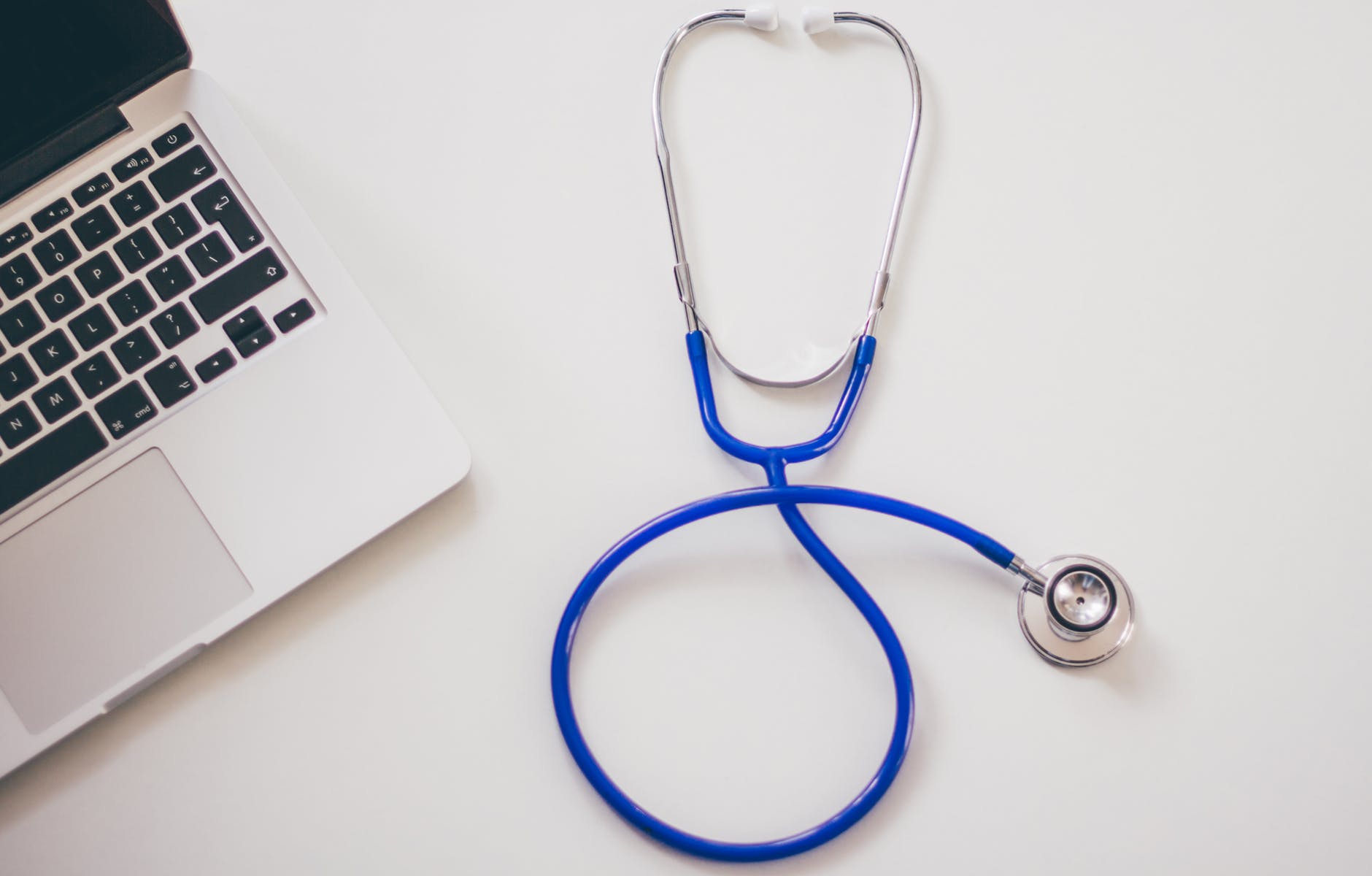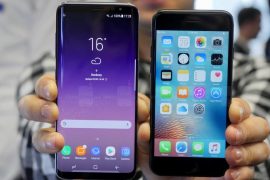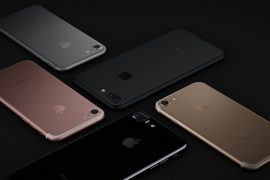Healthcare, just like every other aspect of modern life, has undergone huge changes over the last few decades due to the involvement of technology at every step, and yet, it is so easy to forget about how life was before modern medical science and all its lifesaving gadgets came into being.
Instead of going back too far and discussing how the MRI machine changed diagnostic imaging forever, or when the first proper piece of prosthetics was developed, we are going to discuss more recent technological breakthroughs that either already have, or are about to have, a significant impact on the quality of patient care, ability to treat various ailments, and even the career prospects of healthcare.
The Internet Revolutionized Healthcare Education: It is Going to Play an Even Bigger Role Now
The internet is not just a tool that can be used for catching up with friends and research, it is also a tool that binds nearly every piece of modern technology to each other and makes communication as easy as it is today.
Therefore, the impact of the internet on healthcare is too intricately connected with everything to be mentioned in all its details. Instead, we will discuss the impact the internet has already had on assistive medical education, as well as how it is our biggest hope of preventing an impending medical crisis.
In a report published on the US government’s National Center for Biotechnology Information (NCBI) website, there were multiple alarming facts presented. This particular report, and quite a few others like it, clearly stated that by the year 2022, the entire country is going to face a major shortage of nursing staff, in proportion to the demand. The US Bureau of Labor Statistics has estimated that deficit to be around the 1.10 million mark, which, if true, will lead to a very serious problem.
Thanks to the availability of fast internet connections, cloud based software tools, and of course, the hardware to support it all in the palm of our hands, online education has presented a way for the healthcare industry to counter this impending shortage.
CCNE accredited BSN to MSN, BSN to MSN – FNP, MSN to DNP and various other advanced nursing courses are being offered by Baylor University Online, making it possible for registered nurses to complete higher education and take up leading positions in the nursing sector. All of that without having to give up on their present full-time jobs, thus making it a practical option.
As the present nursing force is able to continue on with their jobs and complete their education simultaneously, it has the following advantages for the nurses, patients and the healthcare industry as a whole:
-The healthcare sector doesn’t have to lose out on any of their present staff
-NPs, NNPs, FNPs and Midwives can fill some of the healthcare gap plaguing rural US counties
-More qualified nurses are able to handle more responsibilities and take on administrative roles
-The primary problem of money vs future prospect is solved, making way for more qualified nurses
-The practical prospect of having a better career in the future is drawing in more individuals to the nursing profession

Health Monitoring: Wearables and Implants
Health monitoring via wearable devices is not just a fancy gadget idea for fitness freaks anymore as wearables have developed into fully fledged medical devices, capable of doing much more than just measuring the total number of calories burned.
A wearable ECG machine like the Move ECG can keep a heart patient under constant observation, letting the patient and the doctor in charge know immediately if something isn’t right with their sinus rhythm or if it detects atrial fibrillation during any time of the day or night.
Then we have the blood pressure monitors which are not nearly as advanced as the wearable ECG machine is, but for patients suffering from hypertension, in particular, they are often a lifesaver. They can detect and warn against a sudden rise in blood pressure, which could prevent or at least predict a heart attack.
Implants are, as of now, at their prototype stage and there is no telling when they will actually be available. However, the potential is tremendous here, since the conceptual devices placed inside a patient’s body can essentially let them know almost anything about their physical condition, via their own smartphones.
Emergency patients who require constant attention can benefit greatly from such devices as these can let their doctors be in constant touch with their patient’s internal conditions without even being there in person. This also has the obvious potential of saving the patient from a lot of tests which are standard today.
However, there might also be controversies if the implants are allowed on the market, given that the insurance companies have expressed explicit interest in them. It might be possible that some insurance companies will incentivize getting implants with lower premiums and higher caps, so that they can monitor their clients.
When implants become a viable option in the near future, we will just have to wait and see what restrictions are implemented by the government and how the healthcare industry is affected by them.

Online Diagnosis: A Rising Prospect Previously Thought Impossible
Even in 2019, there simply aren’t enough doctors to meet the needs of every patient, which is a problem that looks even more serious when we add in the previously mentioned deficit of assistive medical care professionals. In the coming years, this gap between demand and supply is only going to increase further.
Online patient diagnosis and physician consultation is fast becoming a popular trend, which was thought impossible or downright ludicrous before. Although the video, audio and chat consultations are only meant for remote areas and for addressing minor medical issues today, this has the opportunity to develop into something much more reliable.
In a future scenario where doctors already have access to all the medical data required, on account of a medical implant inside the patient’s body, they will be able to make an accurate diagnosis in at least some of the cases. It may not still be enough for every patient, but online diagnosis and treatment can make a huge difference for a lot of them.
The availability of online diagnosis and subsequent treatment advice will be instrumental in meeting the ever-increasing demand for doctors, especially in rural areas, where most patients do not have a better option. Video and audio consultation, in combination with access to internal data, would allow doctors to treat patients thousands of miles away from them.
Robotic Surgeries: Eliminating Human Error?
Robots have been used in surgeries for decades now (since 1985), but earlier on, they did not have the best of reputations. However, what we had back then and what robotics and machine learning has given surgeons access to today are light years apart from each other.
Not only does the new robotic equipment allow surgeons to operate with more precision and finer control over their procedures than their own hands can during minimally invasive microsurgeries, but these intelligent robots can also prevent minute human errors as well. What this means is that if the surgeon needs to make an incision of 1cm, the incision will be of 1cm and no more.
In optical surgeries, intelligent robots are outperforming even the best eye surgeons in the world, thanks to their superhuman precision. Medical science is not yet at a stage where independent surgery by a robot can be considered feasible, but it isn’t entirely out of the realms of possibility either anymore. As a matter of fact, multiple surgical robots are being developed and trained even today for this specific purpose.
The Pillbot: Intelligent Capsule Endoscopy and Much More
The first successful capsule endoscopy was performed back in 2001 and it has since proven itself to be an exceptional diagnostic tool. The capsule camera allows doctors to inspect the small intestine thoroughly; a task that neither traditional endoscopy or colonoscopy can be used for due to the distance in between the target location and both the oral and the anal cavity.
The future, however, holds even more promise for diagnostic capsules because remote controlled units will let doctors send the pill camera wherever they want it to go. This would remove the only limitation of a pill endoscopy and make it infinitely more useful.
On making the pillbot actually capable of basic pattern recognition, it is possible that the capsule will, on its own, travel to locations or focus on areas that need the doctor’s attention.
Identification of tumors, getting tiny samples for biopsies and even specific, point-delivery of the necessary medication will become possible soon with the use of remote controlled, intelligent pillbots.

Non-Invasive Lung Biopsy and Surgery Could be a Possibility Very Soon
Johnson & Johnson recently acquired a startup project by the name of Auris Health. The $3.4 billion dollar project involves a process which is already FDA-approved and will soon be available for the detection of lung cancer without needing to open up the patient’s lungs for a biopsy.
The incredible, camera-mounted bronchoscope (known as Monarch) can enter the lungs via the airways, get images, record videos, scan areas of interest and even take samples for the biopsy, if required. This means that even if an MRI or x-ray shows a shadow within the patient’s lungs, doctors will be able to perform a biopsy without having to cut the patient open.
This is a huge evolutionary step in lung disease and cancer diagnosis because until now, the only way to know for sure whether a shadow that looks like cancer is benign or not is by performing lung surgery and being ready to remove the mass, if required and possible. Unnecessary lung surgeries are not uncommon for this reason and there is no way to help in every situation either.
At this stage, the goal is to get the Monarch in perfect working condition before introducing it to the market, but this device has the potential to even remove tumors and masses, without subjecting a patient to major, invasive surgery. Young children, infants, and weak patients often do not survive lung surgery, but the Monarch could potentially change this in the future.
Neurologically Connected Cybernetic Prosthetics: Cyborgs are Real!
Prosthetics have come a long way, but Elon Musk is determined to take them to the next level by implanting a microchip inside the brain of the patient! The Neuralink project almost sounds similar to what we are used to seeing on cybernetic organisms in Sci-Fi movies, and in truth it is exactly that.
Once the Brain-Computer Interface (BCI) chip has been implanted inside the amputee’s brain, they will be able to control the bionic arm in the same way that they were once able to control their missing limb.
The extent of the technology and its applications could be life changing for amputees, but it could also have other controversial applications in the future. Nevertheless, if Elon Musk is able to pull it off successfully, an amputee with a bionic arm and a BCI chip will truly become a cybernetic organism by definition, aka, a cyborg. In time, the hand could prove to be more powerful and useful than the lost, biological arm.
Robotic Germ Killers
As the final entrée onto this list, robotic germ killers have to be mentioned. Ultraviolet rays can be used by anyone to kill 98% of the germs found in a hospital setting, but the human limitation is in our ability to cover all areas and detect the germs with precision.
Xenex has already sold multiple germ killing, UV-powered robots in the top hospitals around the US, and PurpleSun is another manufacturer looking to supply similar robots to healthcare facilities, but at a more affordable cost.
Once these robots are perfected, and more widely adopted, the spread of hospital-borne diseases could be limited to a great degree, if not almost eliminated altogether.
There is no telling what else the future holds for medical science and how else technology is going to change healthcare, but it does look quite promising and hopeful for a lot of patients around the world.







